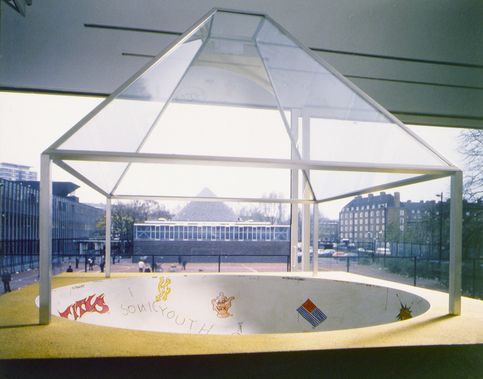Model for Skateboard Pavilion

Dan Graham
Model for Skateboard Pavilion, 1989
Architecture model Two-way mirror, aluminum, polyester-cast, painted light-grey and with graffiti, wooden floor, coated with sand and sawdust, painted green, particle board base, painted gray 206 x 145 x 145 cm
GF0000191.00.0-1995
Artwork text
Skateboard Pavilion, consisting of a large, cement, concave dish for skateboarding and a canopy of two-way mirror glass, a four-sided pyramidal form truncated at the top so that it is open, was first proposed for a “stopping point” for the International Garden Year in 1993 in Stuttgart, Germany. It was not accepted, perhaps because the notion of a recreational attraction primarily for teenagers was not thought to be a good idea. It works maximally when the skateboarder approaches the lip or top edge of the concave dish and looks up towards the sky/canopy and sees a combined kaleidoscopic reflection and transparent image of himself and the surrounding environment on the canopy form. The cutaway top produces a diamond-like image also projected on the two-way mirror canopy. (Dan Graham)